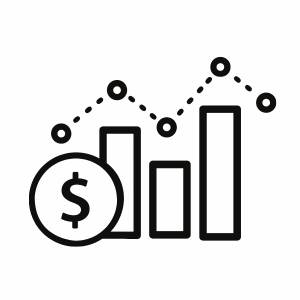Data analytics drives your customer acquisition, retention, sales, products and service development and innovation. Data is the lifeblood of your business.
Data analytics boosts your business performance and improves your bottom line. Without data you’re flying blind.
“The goal is to turn data into information and information into insight.”
– Carly Fiorina, former CEO, Hewlett Packard.
I find that most businesses fall into two categories:
1. Not capturing the data you need
2. Capturing random data and not applying it strategically
We can help you at either stage. Whether you need systems and processes set up to gather your data or help implementing your data strategically to innovate your business, we can help.

Data analytics best practices can help your business thrive in the following ways:
✔ Increase customer acquisition and retention
✔ Reduce costs
✔ Increase efficiency
✔ Identify weaknesses and failures
✔ Design new products and services
✔ Conduct 360-degree customer reviews
✔ Identify and prevent fraud
✔ Increase operational efficiency
✔ Optimize pricing strategies
✔ Make smarter business decisions
✔ Improve marketing campaigns
Data and insights grow your business exponentially.
We can help you set up data systems and procedures to track data to:
✔ Understand your customers’ buying habits
✔ Capitalise on trends
✔ Get an advantage over your competitors
✔ Innovate systems, services and products such as your customer experience journey

How can you use data analytics to uplevel your business?
1. Descriptive Analysis
If you have a question about something that has already happened, then descriptive analytics can help you answer it. Descriptive analytics is used as a way to explain something to stakeholders. It can track return on investment (ROI) and other metrics of past performance. Descriptive analytics discovers what happened and when.
2. Diagnostic Analytics
Like a diagnosis, diagnostic analytics provides insight as to why something happened. It works hand-in-hand with descriptive analytics to further explain critical findings. If you take a look at key performance indicators (KPIs) and want to understand why something improved or got worse, then diagnostic analytics help to:
〉Identify anomalies in data
〉Collect the data that helps to understand the changes
〉Uses statistical techniques to help explain such anomalies
For example, diagnostic analytics can help answer why your team may have missed its targeted goals in a given period.
3. Predictive Analytics
As the name implies, predictive analytics work to answer questions about what could happen in the future. This analytic method leverages past data to evaluate trends and estimate the likelihood of something recurring.

